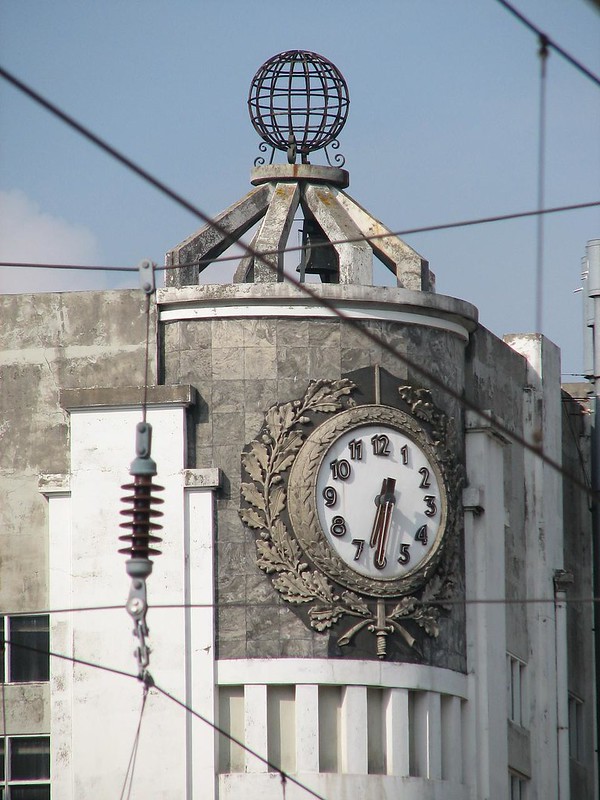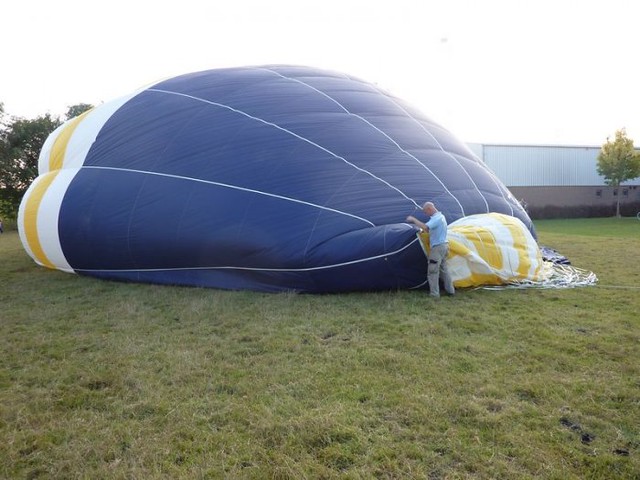
STOP PUSHING THE RIVER — PART 1
I remember when “don’t push the river; it flows by itself” was a pop-wisdom phrase on everybody’s lips. A hippie catch-phrase gone viral in the 1960s and 70s, it was likely to be used to browbeat somebody who was tense or anxious or downright scared and getting naggy behind it.
Commonly, back then, the phrase usually kept company with words like “uptight” or “square” and prefaced shaming statements about being some kind of whiny stick in the mud.

Gestalt therapy was built on various holistic theories and practices that also informed the 1970s Human Potential Movement. Many of today’s mindfulness practices have connections and roots in common with it as well.
The Gestalt counterintuitive approach to human connection is a powerful one, but it seems that many people found the process to be too confrontational (maybe even invasive). It’s a hard thing having to deal with that kind of in-your-face, up-close-and-personal authenticity and blatant caring when you’re feeling fragile.
If you’d like a taste of the process used by Gestalt therapists, click on the button below for a 2-minute video that features renowned Gestalt therapist, teacher and author Erving Polster attempting to connect with another person in a meaningful dialogue. It was uploaded by PsychotherapyNet in 2012.
MINDING THE RIVER
Now, here’s the thing: we are, many of us, getting raggedy as our post-modern world churns, it seems. It occurred to me that now would probably be a good time to break out that old river phrase again.
Reminding ourselves to “stop pushing the river” might help to turn the flood of anxiety, despondency and angst that seems to be running amok among us.

THE STORIES BEHIND THE WAY WE LOOK AT TIME
The questions you might want to ask about all this are these:
- What does that phrase about pushing the river actually mean?
- What river are we talking about?
- Why were those hippy-dippy flower children always blathering on about it?
- Why should it matter to us and to other intrepid baby space cadets and techno-dreamers?
To figure out some answers to those questions, maybe we need to look at an even older quote from the Stoic philosopher Marcus Aurelius. Aurelius was the last emperor of the Pax Romana, a “golden age” of relative calm and peace for the Roman Empire that lasted from 27 BCE to 180 CE, the year Aurelius died.
He said,
“Time is a sort of river of passing events, and strong is its current; no sooner is a thing brought to sight than it is swept by and another takes its place, and this too will be swept away.”
That quote is just a flat-out description of how humans often perceive the nature of the Time thought-construct we’ve built together through the ages: Everything just keeps on coming. It all just keeps rolling on in front of us until we fall over dead.
We’re pretty certain that the Time river will keep on rolling on even when we are no longer there on its banks to see it. For one thing, it hasn’t stopped yet. It’s one of those infinite “forever” things.

Like the people living on the banks of a mighty river everywhere, the achievement junkies and the adventuresome sorts among us keep on trying to figure out ways they can use the movements and energy of the Time river to get them to where they want to go.

Wo!
PROBLEMS IN RIVER-SIDE CITY
Here’s a big news flash: Many of the bright and shiny time-management hacks and clever moves that the modern-day productivity mavens advocate do work. The problem is, they don’t quite get us to where many of us say we want to go.
So, you get more efficient. You snip and clip and trim your tasks until they’re little do-able chunks. Then you tuck and squash the little chunks into smaller and smaller bits of time.
In this way, you can minimize and maybe even disappear all the “unproductive” bits of time–a few minutes here, a few hours there, a few days, or maybe even a few weeks, months, or years. Whoo-hoo!
The promise of Time Management is that when we become more “efficient” we will be able to make enough room in our lives to comfortably accommodate our to-dos. When we do the moves consistently and constantly, these experts say, we’ll be able to work through the process of fulfilling the assorted promises we have already made to ourselves or to other people with ease.

The first one is that to-dos apparently breed and the slippery things reiterate over and over again. Not only that, they are infinite and eternal and can materialize out of the ethers without warning. Let’s break this one down:
- The consensus-world we have constructed together runs on promises.
- It is possible for each one of the people living in our consensus world to make any number of promises.
- The thing is each promise you make—even the ones you aren’t aware you have made—is the breeding ground for yet more to-dos that you will have to do (or con somebody else into doing).
Successfully making the room you need to breathe in the press of to-dos you already carry seems to send off flares that signal your ability to take on more tasks and even more roles.

Ouch!
The other problem is a less obvious but even more fundamental one. “Productivity” is a measure of the effort you put in to produce goods or services over a specific period of time.
It is not about individual happiness or joy. It is not about creativity or self-awareness or even about self-development. It is a whole other movie.
Oh.
CLOCK-TIME TICKING AND TOCKING ==> PRODUCTIVITY
Productivity is based on living by clock-time. Clocks were developed as a way to standardize how we measure the time it takes to make or do something with other people.

The passage of time didn’t matter quite so much when the whole process could be done by just one person.
However, when a whole group of people were needed to work together within a set amount of time to produce some product or service, and every individual knew a lot about how to do one tiny part of a complex process but not much about doing all of it, then clocks got to be really important.
All of the peeps working together have to get the syncopation and the rhythm right when all the work of all the people down the line depends on the person ahead of them in the process getting his or her part done right. “Timely” got to be a really common contractual word.

According to one source, this naming the time-bits thing is a fairly “recent” development, actually. It’s probably only been in the last 1500 years or so that most of the people on the planet even had a commonly agreed-upon system for naming dates.
First the peeps had to stop killing off strangers as soon as they saw them and they had to figure out how to talk with each other. Then setting up and agreeing upon the length of years, months, days, hours, minutes and seconds had to happen. (When you think about it, the whole thing is pretty mind-blowing.)
CLOCK-TIME DISSECTED (WITH COMMENTARY)
Clock-time is mechanistic. It is linear, sequential, and most objectively quantitative. It is focused on process and grew out of our awareness of the passing of the seasons and the aging of our bodies. It references time and space.
We measure clock-time by seconds, minutes, hours, and years and locate that measure of time in a particular place. Our concept of global time zones grew out of that mindset. For example, we figured out that Tokyo time is 13 hours ahead of New York time, so when it’s 7:49 in the morning in New York, it’s 8:49 at night in Tokyo.
Click the button below for timeanddate.com’s online time zone map.
Nowadays we also take this other time-related absolutely awesome mind-boggle for granted. (Probably we’re so busy coping with the reality and the side-effects of this innovation of ours that we don’t even notice how totally cool it actually is.)
……
Nobody ever seems to talk about this but, we humans can actually “feel” the movement of time through our consensus-world because we’ve given it a metaphorical space in which to be.
Add this to the fact that our innately categorizing and organizing minds apparently can actually visualize the connections between our actions and the movements, reactions and responses of all the rest of the everything around us and…
Wo! We’ve got show-time.
Those of us who are especially good at connecting dots can actually trace the pathways between the dots we see. Because of this, targets can be pinpointed, goals can be formulated, plans can be made, and so on and so forth.

Productivity guru Bob Proctor tells us, “If you see it in your mind, you will hold it in your hand.”
Uh-huh.
However, there is one downside to this amazing innately human ability of ours.
Because we have set some sort of a time-frame around the plans we’ve made to reach a particular goal, we have succeeded in turning the whole endeavor into a track and field event that includes a lot of hurdles.
Then we start running.


INTO THE MYTHIC
The ancient Greeks called clock-time “Kronos”. It’s spelled “cronos” or “chronos” in English and it’s where we get our word “chronology”.
The Greek personification of the concept came down to us as old Father Time, a weary old man with a bent back and a long beard carrying a scythe and (sometimes) an hourglass. (His resemblance to the Grim Reaper is not accidental.)
The Romans, who marched all over the Greeks, co-opted a bunch of their concepts and built an empire of their own, called Kronos “Saturn.” The Romans worshipped him as the most important of their Elder Gods, the Titans. They said that he was the Lord of the Universe and the source of life and death, ruler over the inexorable march from a definitely settled past towards a predetermined future with no freedom for any sort of willed change (except by him, of course).

In the Roman myths, the mostly benevolent but despotic Saturn really over-reacted to a prophesy that one of his sons was going to be the death of him. He was most proactive about preventing this personal catastrophe: It became his habit to eat each one of his sons as soon as the kid was born.

Jupiter went on to become the king of a new pantheon of gods and together he and his buddies made a whole new era with a whole lot of new and much more exciting stories.
They even got humans involved in world-building and world-changing. I have always supposed that we humans grew and developed our own rambunctious selves and took over where those good ol’ boys and gals left off. And now the horses are running away with us. Oy!
[TO BE CONTINUED….]
Here’s a poem:
JUST ME
Restless.
I cannot sleep.
Monkey-mind leaps round
From one not-done thing to another,
Screeching out imprecations:
I can’t…I don’t…
I need…I want…
I-I-I-I-I…
Ai, ai, ai…eeeee….
The ubiquitous and eternal
To-Do List throbs in my head,
Its checkboxes are like
Hungry mouths, chanting,
“Not-done,”
“Not-done,”
“Not-done.”
“Feed me, Seymour,” they plead.
Ack!
Here I sit, fidgeting,
Swallowing down my
Impatience with What-Is,
Constrained to wait
As what is full empties,
As what is empty fills.
None of it has anything to do with me.
There is nothing I can do.
I know that.
It is not mine to move,
Not mine to point or pinch,
Not mine to push or pull.
I am furious in my helplessness.
I am helpless in my fury.
That fury will subside.
I know that too.
This is just me,
Yelling at the approaching thunder
In a breathless sky,
Just me,
Trying to push against the placid, rolling river.
Just me,
Pissing into the wind.
This is just me,
Suffering over my suffering.
Just me.
[by Netta Kanoho]
Header photo credit: “The Chagrin River pushing through rocks” by Vince Reinhart via Flickr [CC BY-SA 2.0]
……
SOME OTHER POSTS TO EXPLORE:
(Click on each of the post titles below and see where it takes you…)
- STEP BACK FROM THE URGENCY (Another IPS)
- TIME AS A SHAPING TOOL (An Overview)
- ON CLOCK-TIME: An Un-Seeing Exercise
……
Thanks for your visit. I’d appreciate it if you would drop a note and comment below and tell me your thoughts.
8 thoughts on “STOP PUSHING THE RIVER — PART 1”
Interesting article!
It’s a thought-provoking exploration of the concept of time and the pitfalls of productivity. The analogy of “pushing the river” resonates with the idea of trying to control or manipulate something that naturally flows. It reminds me to find a balance between achieving our goals and allowing life to unfold organically.
Keep up the great work!
Wallace, thanks for your visit and for sharing your thoughts. You got it in one go!
Please do come again….
In my opinion, the poem “Stop Pushing the River” is a thought-provoking piece that delves into the concept of surrendering control and embracing the natural flow of life.
When I read this poem, it resonated with my personal experiences of trying to force outcomes and exert control over situations that were beyond my influence. It reminded me of the importance of accepting and adapting to the ebb and flow of life, rather than constantly fighting against it.
The poet’s message encourages us to let go of our need for control and trust in the inherent wisdom of the universe.
One question that arises from this poem is how can we find the balance between taking proactive action and surrendering to the natural course of events? How do we discern when to exert effort and when to release our grip and allow life to unfold organically?
This poem prompts us to reflect on our relationship with control and invites us to consider the profound freedom and peace that can be found in letting go and flowing with the river of life
Akumendoh, thanks for sharing your thoughts on my post. I’m so pleased that I was able to achieve clarity with it.
I’m working on part 2, which I hope will offer some possible actions to consider when trying to balance the conundrums that arise from our interactions with time.
Please do come again.
It seems that ‘creating balance’ in our lives has been a go-to way of doing it all. The problem with this is balancing everything means nothing, or not one thing, can be done with excellence. Even so, I believe that striving for excellence in all areas of our lives may mean we are maxed out on our time. I believe that doing the best we can and even pushing ourselves to peak performance in all areas will create a happier self. The problem with this is most people can’t do it without being under great strain, and stress, and are “pushing the river.”
It takes quite a special kind of human to do it all and maintain a high sense of self. These individuals can be quite productive and valuable; an example to all of us. I’ve known a few of these types and still strive to be one.
Thanks for your visit and for sharing your thoughts, Lisa. I find that I cannot agree with your contention that “balancing everything means nothing, or not one thing, can be done with excellence.”
Myself, I see the art of balancing as being akin to playing on a teeter totter, balancing your tasks as you will.
If you choose to do one thing excellently, you are free to do five or six not-so-important-to-you things just “good enough” or maybe even “subpar.” If you care nothing for one or more of the extraneous things, you can outsource it to someone else or you can just ignore the durned thing.
As a genuine, regularly powered non-super hero, you get to choose which thing you’ll focus your best energies and most of your time. Then, you can use the leftover time and energy to do the rest of the stuff…or not. It’s up to you.
There’s no mandate for super-human excellence in all things, is there? (If there is, then I for one am going to be bending that rule massively!) Hee!
Please do come again!
What an intriguing exploration of the timeless advice ‘don’t push the river; it flows by itself.’ The connections drawn between ancient wisdom, clock-time constraints, and the relentless pursuit of productivity are thought-provoking.
I’m left pondering the questions posed – How does clock-time affect our pursuit of goals and happiness? Can we truly let go and allow the river to flow? Looking forward to Part 2 and diving deeper into the mythic dimensions.
Thanks for your visit and for your comments and questions, Carnella.
You might want to explore the site. (I’ve put up several other posts in the series already.) You might like them.
Please do come again.